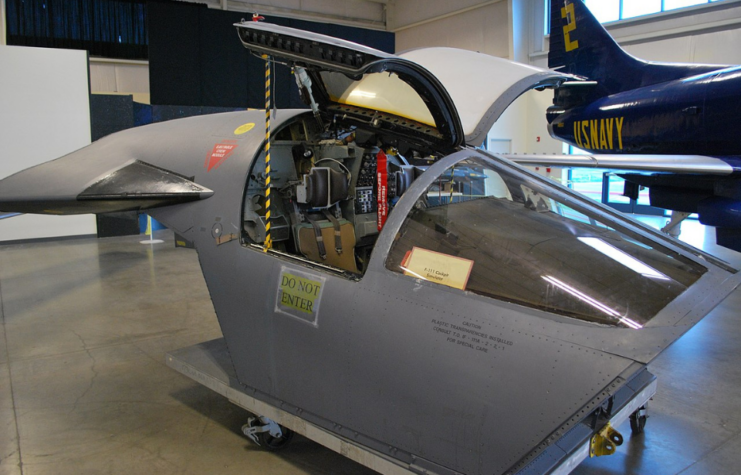The General Dynamics F-111 Aardvark was a supersonic, medium-range, multi-role aircraft. Developed in the 1960s, it fulfilled a number of roles, including strategic bombing, reconnaissance and electronic warfare. It served with the US Air Force from 1968-96, and saw action during the Vietnam War, as well as other notable military events.
The F-111’s name refers to its look, resembling an aardvark with its long nose. It featured variable geometry wings, an internal weapons bay and a side-by-side cockpit configuration. One particularly unique component was its cockpit, which also served as the aircraft’s crew escape module.
Development of crew escape modules

When development on the F-111 Aardvark began, ejection seats had already been developed, allowing pilots and crew members to eject from their aircraft via an explosive charge or rocket motor. Once at a safe distance away, a parachute deploys, ensuring they are able to return to the ground in a safe manner.
Ejection seats are highly effective and are the preferred method for aircrews to safely eject in dangerous situations. That being said, some believed that, if the crew remained in the cockpit, they’d be protected from numerous environmental and situational factors before landing on the ground.
Germany had made early attempts at developing an escape module during the Second World War. The United States began this type of work in the early 1950s, when officials considered implementing the component into the design of the US Navy’s Douglas F4D Skyray.
In the 1960s, the Convair B-58 Hustler became the first production aircraft to have an escape crew capsule. The Stanley Aviation Company developed the part, which was pressurized and had food and other survival supplies. During testing in 1962, a bear was used to measure the component’s effects. The animal became the first living creature to survive a supersonic ejection.
While the B-58 had individual encapsulated seats, the F-111 had a single cabin ejection module.
Crew escape modules and the General Dynamics F-111 Aardvark
The F-111 Aardvark’s escape module was a product of the aircraft’s top speed. At Mach 2.2 – or 1,672 MPH – it was believed the component would provide a significant amount of protection for crew members. The self-contained module was itself the cockpit, as well as the upper and forward sections of the spine. It was watertight, which ensured ejections were just as safe at sea as they were over land.
When the module was ejected, following the pulling of the ejection handle, two rocket nozzles separated the part from the rest of the aircraft. Once released, the forward and upper part of the aircraft’s spine acted like a hood, stabilizing the module latterly and longitudinally. A drag chute was then released, slowing the component down, and stabilization and pitch flaps were deployed to help maintain an even descent.
Once the module had decelerated to 300 knots, the recovery chute was released. When deployed, its bridal cables were released, allowing for the module to level out. Impact bags were then deployed at the bottom, ensuring a safe touchdown.
An invaluable component

The F-111 Aardvark’s crew escape module was unusual, yet highly effective.
It was first used on October 19, 1967. Two General Dynamics contractor pilots were flying an F-111A over Texas when the aircraft experienced a total hydraulic failure and they lost control. Their only option: eject. At 28,000 feet and traveling at 280 knots, they jettisoned the escape module, and the two pilots were slowly lowered to the ground. Neither suffered any injury.
Serving with the US Air Force in multiple conflicts, including the Vietnam and Gulf wars, the F-111, unfortunately, had ample opportunity to show off its escape module. Initially, it had a troubled debut. However, as the aircraft saw improvements, the component proved to be not only an invaluable part of the crew’s survival, but an incredible piece of engineering.
More from us: North American B-25 Mitchell: The Most Produced American Medium Bomber of World War II
With there were attempts to incorporate crew escape modules into other aircraft designs, such as that of the Rockwell B-1 Lancer, the F-111 was the primary and only user of the crew escape module.
